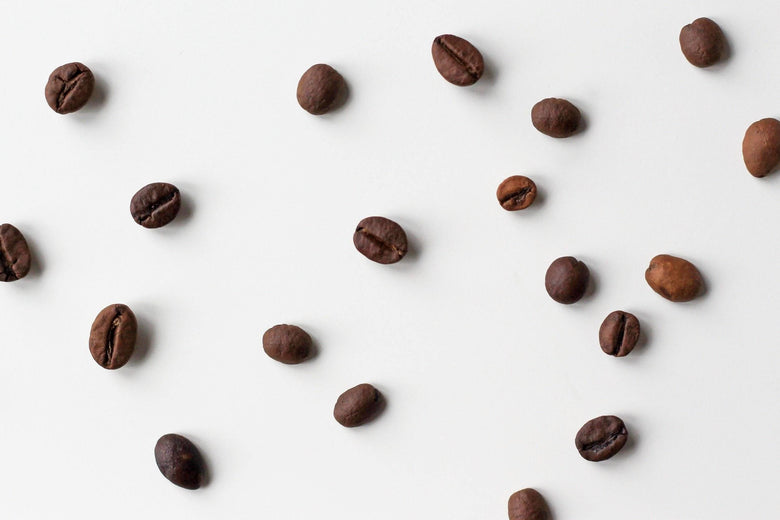Explore the Bold Flavor Profile of SOE Single Origin Espresso Today
Explore the Bold Flavor Profile of SOE Single Origin Espresso Today
Blog Article
Coffee Beans 101: Everything You Need to Understand About Coffee and Blended Coffee Beans
When it comes to coffee, recognizing the nuances of espresso and blended beans can change your day-to-day cup. From the growing procedure to roasting strategies, every step plays a duty in your coffee experience.
Understanding Coffee Beans: Selections and kinds
When diving right into the globe of coffee, comprehending the types and ranges of coffee beans is important for every fanatic. You'll mostly come across 2 major species: Arabica and Robusta. Arabica beans are recognized for their smooth, intricate flavors and lower caffeine content, making them a favored among coffee connoisseurs. On the other hand, Robusta beans pack a strike with a more powerful, more bitter taste and higher high levels of caffeine levels, commonly used in coffee blends.
Within these varieties, you'll discover numerous local selections, each bringing special qualities. Ethiopian Yirgacheffe provides intense flower notes, while Colombian beans give a healthy flavor profile. As you explore, bear in mind to take notice of handling approaches like washed or all-natural, as they can considerably affect the last taste. By familiarizing yourself with these beans and their tastes, you'll boost your coffee experience and make even more informed choices in your developing trip.
The Growing Process: From Seed to Bean
When you discover the trip of coffee, everything starts with seed option strategies that set the foundation for top quality. From there, farming and harvesting play essential duties in making certain the beans flourish. Processing approaches transform those harvested cherries right into the coffee beans you enjoy.
Seed Choice Techniques
Picking the best seeds is essential for creating high-grade coffee beans, as it lays the structure for the whole expanding process. You ought to start by picking seeds from reliable resources that focus on quality and genetic variety. Seek ranges understood to thrive in your particular climate and soil conditions. Take notice of the seed's age and storage conditions, as fresh seeds have a tendency to sprout far better. When possible, select natural seeds to reduce exposure to dangerous chemicals. Consider the disease resistance of different varieties, as this can greatly affect your return. Lastly, do not hesitate to talk to neighborhood farmers or specialists to acquire understandings into the most effective seed alternatives for your region. This understanding will certainly improve your coffee-growing experience.
Cultivation and Harvesting
As you support your coffee seeds into flourishing plants, recognizing the growing and harvesting procedure is vital for attaining the ideal flavor and quality. Begin by growing your seeds in well-draining soil, preferably in a shaded area to protect them from direct sunlight.
When it comes time to harvest, search for ripe cherries, which usually transform a vivid red. Hand-picking is usually the most effective approach to ensure just the ripest cherries are selected. Timing is necessary; harvesting as well late or also very early can influence the flavor account of your beans. Welcome persistence and care, as this is where top quality starts.

Processing Approaches Discussed
Once you've harvested your coffee cherries, the following essential action is refining them to change those vibrant fruits into the beans you'll brew. There are two main techniques: the damp process and the completely dry procedure. In the completely dry process, you spread the cherries out in the sun to dry, enabling the fruit to ferment and impart special tastes to the beans. On the other hand, the wet procedure includes removing the fruit promptly and fermenting the beans in water, causing a cleaner taste. After processing, the beans are hulled, sorted, and generally dried again. Each method impacts the flavor account, so trying out both can assist you find your favorite brew. Comprehending these approaches is vital to enjoying your coffee experience.
Toasting Techniques: How Taste Is Established
When it involves toasting coffee beans, comprehending roast levels is essential to exposing their one-of-a-kind tastes. Each toasting technique effects the fragrance and enhances the taste development process, offering you a richer coffee experience. Let's discover just how these variables come with each other to elevate your day-to-day mixture.
Roast Levels Described
Roast degrees play an essential role in shaping the taste profile of your coffee. When you choose a light roast, you'll delight in brilliant acidity and fruity notes. As you relocate to a medium roast, you'll observe a balance of sweet taste and intricacy, often highlighting chocolate or sugar flavors. Dark roasts, on the various other hand, supply vibrant, great smoky attributes with less level of acidity, making them robust and abundant. Each degree arises from various roasting times and temperature levels, affecting the beans' chemical structure. By comprehending these degrees, you can better pick a coffee that matches your taste preferences. Try out different roasts to discover which one reverberates with you, boosting your overall coffee experience and enjoyment.
Influence On Fragrance
The roast degree not just influences the preference of your coffee but also greatly influences its scent. When you pick a light roast, you'll frequently discover bright, floral notes that can make your coffee odor vivid and fresh. As the beans dim, the scent shifts; a tool roast brings out more balanced, caramelized scents, while a dark roast often tends to feature strong, smoky undertones. Each roasting method releases various unpredictable compounds, forming just how your coffee smells. Furthermore, the quality of the beans plays an important role; freshly baked coffee releases more fragrant oils, boosting that attracting aroma. So, focus on the roast level-- it's key to exposing the full fragrant experience of your brew.
Flavor Advancement Refine
As you check out the taste development procedure, you'll discover that roasting methods play an important function in forming the preference profile of your coffee. The toasting temperature and time directly influence the acidity, sweetness, and bitterness of the beans. Light roasts maintain even more of the bean's initial flavors, highlighting flower and fruity notes.
Coffee vs. Blended Coffee: Trick Differences
Coffee and combined coffee each deal special experiences that deal with different tastes and preferences. Coffee is a concentrated coffee brewed by forcing warm water through finely-ground coffee beans, causing an abundant, strong flavor and a creamy layer of crema on top. It's frequently enjoyed as a shot or utilized as a base for drinks like coffees and cappucinos.
On the other hand, combined coffee integrates different beans from different regions, producing a much more balanced taste account. You'll commonly find blends that highlight sweetness, level of acidity, or body, making them flexible for different developing methods. While espresso concentrates on intensity, blended coffee might offer a more comprehensive variety of flavors that can transform with each sip.
Eventually, your selection in between coffee and combined coffee come down to your personal choice. Whether you yearn for a quick jolt or a leisurely mug, both options have something delicious to offer.

Brewing Methods: Opening the Perfect Cup
When it involves brewing coffee, finding the right method can transform your experience and elevate your Single Origin Espresso mug. Each developing method has its distinct beauty and can considerably affect your coffee's taste and scent. As an example, making use of a French press enables you to take pleasure in a full-bodied and rich brew, while a pour-over technique offers a clean, intense mug with unique tastes.
If you prefer coffee, investing in a quality machine can aid you understand the art of pulling shots. For benefit, a single-serve skin system provides rate without compromising preference.
Don't forget chilly brew, which supplies a smooth, much less acidic coffee suitable for warm days. Explore various methods to discover what resonates with your taste. Each brewing method opens up a brand-new world of opportunities, so put in the time to discover and find your ideal cup. Happy brewing!
Sampling Notes: Identifying Flavor Profiles
Just how can you truly value your coffee if you don't understand what tastes to try to find? Tasting notes are your guide to understanding the complicated world of coffee. Pay attention to the initial tastes that strike your palate when you drink. You may identify fruity notes, like berry or citrus, or maybe a nutty undertone. As you proceed to taste, see how the tastes evolve-- this is referred to as the "finish." Some coffees might leave a chocolatey or sugar aftertaste, while others might have a brilliant, clean surface.
Consider the body of the coffee, as well; is it light and ventilated or thick and syrupy? Do not fail to remember level of acidity; a brilliant level of acidity can add spiritedness, while a reduced acidity could give a smoother experience. By recognizing these flavor accounts, you'll grow your connection with each mug, making coffee tasting a wonderful journey of discovery.

Tips for Selecting and Storing Coffee Beans
Saving and picking coffee beans correctly can substantially improve your brewing experience. Beginning by selecting top quality beans that fit your taste - SOE.
Once you have your beans, store them in a closed container to stop direct exposure to air, light, and wetness. A dark, amazing area functions best, so stay clear of keeping them in the refrigerator or fridge freezer, as this can introduce moisture. Only grind the amount you require to maintain quality; entire beans retain taste longer than pre-ground coffee.
Finally, try to utilize your beans within 2 to 4 weeks after opening up for peak taste. Following these ideas will certainly assure your coffee remains delightful and tasty, boosting your daily mixture to new elevations.
Often Asked Inquiries
Just How Lengthy Do Coffee Beans Keep Fresh After Toasting?
Coffee beans stay fresh for about 2 weeks after roasting - SOE. You should store them in an airtight container, away from light and moisture. After that, their flavor and scent start to decrease substantially

Can I Mix Different Coffee Bean Varieties?
Definitely, you can mix various coffee bean ranges! Trying out blends can enhance tastes and create a distinct preference profile. Simply ensure to stabilize the toughness and attributes of each variety for the finest results.
What Is the Ideal Grind Size for Espresso?
For coffee, you'll want a great grind dimension, regarding the texture of salt. This enables perfect removal, resulting in an abundant, tasty shot. Experiment a bit to locate what matches your taste best!
How Does Elevation Affect Coffee Bean Flavor?
Altitude affects coffee bean flavor by affecting the growth rate and chemical structure. Greater altitudes bring about slower growth, which enhances level of acidity and complexity, offering your coffee a vivid and special taste you will not neglect.
Exist Decaffeinated Versions of Espresso Beans?
Yes, there are decaffeinated versions of espresso beans. You can take pleasure in an abundant espresso taste without the caffeine kick. Just try to find "decaf" blends at your neighborhood coffee bar or specialty store.
Coffee Beans 101: Whatever You Need to Know About Coffee and Blended Coffee Beans.
When diving right into the world of coffee, understanding the kinds and varieties of coffee beans is crucial for every fanatic.When it comes to roasting coffee beans, comprehending roast levels is key to exposing their unique flavors. Coffee is a concentrated coffee brewed by requiring hot water via finely-ground coffee beans, resulting in an abundant, strong flavor and a creamy layer of crema on top.On the various other hand, mixed coffee combines numerous beans from various areas, developing a much more well balanced flavor account.
Report this page